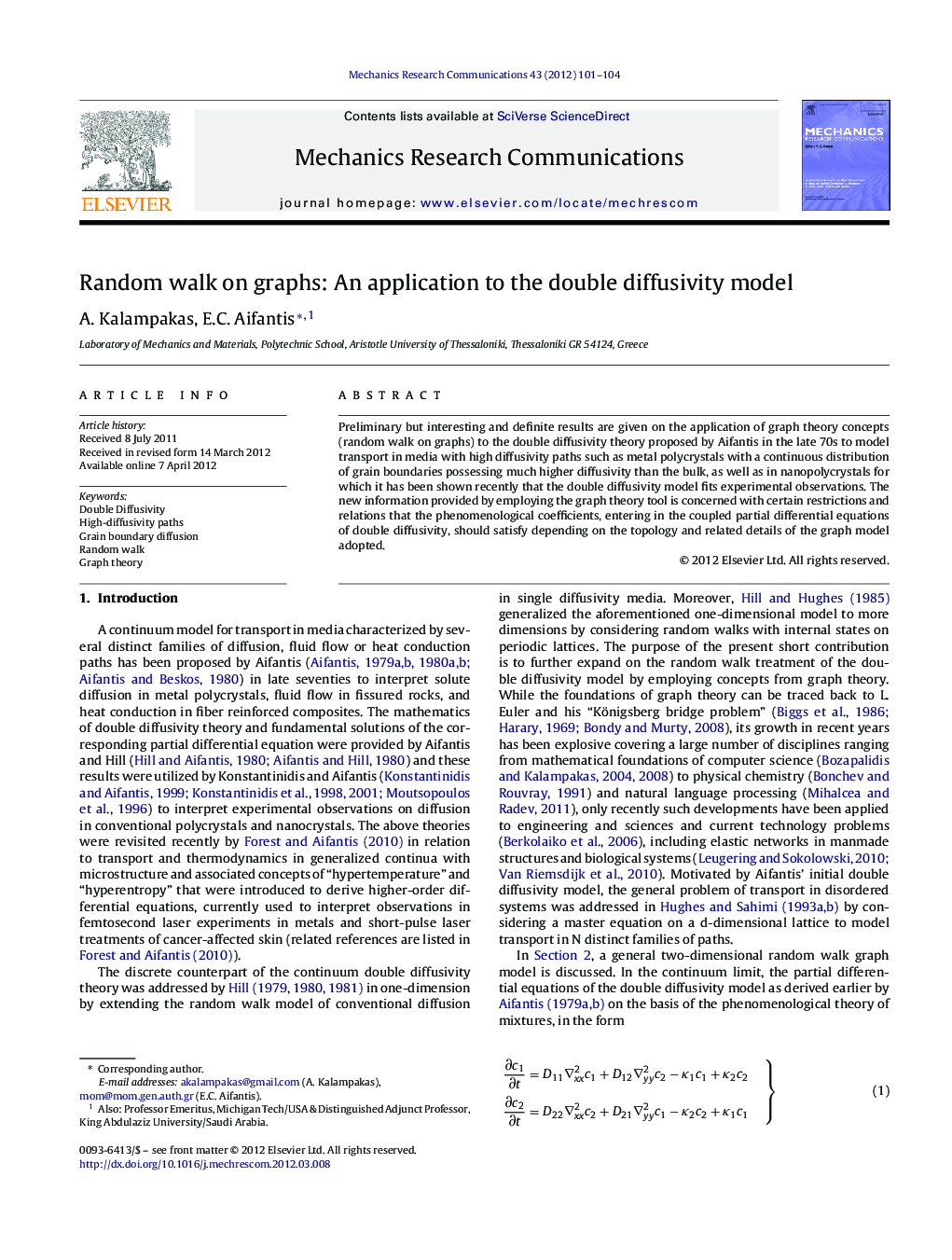| Article ID | Journal | Published Year | Pages | File Type |
|---|---|---|---|---|
| 800990 | Mechanics Research Communications | 2012 | 4 Pages |
Preliminary but interesting and definite results are given on the application of graph theory concepts (random walk on graphs) to the double diffusivity theory proposed by Aifantis in the late 70s to model transport in media with high diffusivity paths such as metal polycrystals with a continuous distribution of grain boundaries possessing much higher diffusivity than the bulk, as well as in nanopolycrystals for which it has been shown recently that the double diffusivity model fits experimental observations. The new information provided by employing the graph theory tool is concerned with certain restrictions and relations that the phenomenological coefficients, entering in the coupled partial differential equations of double diffusivity, should satisfy depending on the topology and related details of the graph model adopted.
